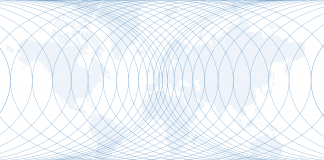The world is focused on the Hamas-Israel war that is now raging. But this war has its psychological antecedents in a war that occurred 50 years before, in 1973, when Syria and Egypt simultaneously attacked Israel. In retrospect, neither intended to occupy Israel, and nor could they. But it was believed that a massive two-front war could force Israel into a negotiation in which it would have to cede some territory and, even more important, Israel would have to shed its reputation as the dominant force in the Middle East.
The fighting began with a dual attack. The Syrians moved into the Golan Heights, a highland overlooking northeastern Israel and the Galilee. The attack started at midday, with the major battle fought at night. The Syrians were equipped with Soviet tanks, and their objective was to take the heights to create a perfect theater for showering the Galilee with artillery fire, forcing Israeli armor to try to climb the heights and suffer great casualties.
The Egyptian thrust came over Sinai, and in terms of total forces available, it was the main force. Again, the primary weapon was Soviet tanks, plus surface-to-air missiles designed to neutralize Israel’s air superiority, a gift of the United States. The Egyptians had another surprise for the Israelis. The Soviets had developed a family of anti-tank missiles. One, the AT-3, was controlled by an optical system. The shooter would look through the lens at a tank, and the movement of the optical system directed the trajectory of the missile. It was a superb weapon, and it devastated a critical part of the Israeli armored force.
Israeli intelligence, particularly military intelligence, proved inflexible in understanding that an attack was coming. It did not believe that Syria or Egypt could launch a two-front war. The Israelis knew of the Soviet weapons, but their contempt for the Syrians and the Egyptians made it impossible for them to see that neutralizing Israeli air power and armor was possible, and that Russian trainers had helped professionalize the force. Israeli military intelligence shaped the threat to suit its prejudices.
Syria’s goal was clear, if unlikely: It wanted to take the Galilee. Egypt’s was never clear. Logistics prevented the Egyptians from penetrating deep into Sinai, and they seemed to have wanted to hold the Suez Canal on the western side and call it a day.
What both Syria and Egypt wanted was to show they could engage Israel and emerge with some sort of victory. They wanted to redeem themselves from prior humiliation. Russia wanted to demonstrate that its weapons could match NATO’s and be redeployed. The United States’ desired endgame was most interesting. It wanted to assure a modest victory for Israel, followed by a negotiation between the main foes, Israel and Egypt, that guaranteed a near-draw between them. Washington would mediate. This would expel the Soviets and draw Egypt into the American sphere. The goal was achieved.
The war was a duel between the Soviet Union and the United States. The Soviets armed the Syrians and the Egyptians. The U.S. rushed 155 mm artillery to Israel, after a pause to show the Arabs it was not totally committed to Israel. And the U.S., having seen the AT-3 in action, rushed into a new phase of armored warfare. It could thank the Russians for the lesson; the fruits of that effort are helping Ukraine defend itself today.
The U.S. victory was evident at Camp David a few years later, when Egypt and Israel signed an accord ending the near-war status. This was, in retrospect, what Israel and Egypt wanted as much as what the United States wanted. Syria was too minor and too close to the Soviets to be included.
It was this war that made the agreement at Camp David possible, and this treaty that made for nearly half a century of relative peace. Mark Twain once said that history does not repeat itself, but it sure rhymes. The current war will not simply reflect the 1973 war. But it will rhyme in the sense that the deep structure of Israeli-Arab warfare will retain the same external and internal parties in due course providing weapons to their allies. We can’t predict based on that war but we can grasp the driving forces.






